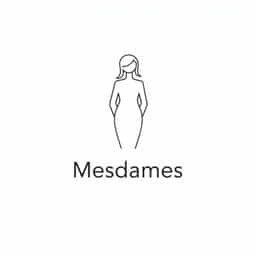The use of formal titles in communication plays a significant role in showing respect, politeness, and cultural awareness. Among these, the term ‘Mesdames’ is a French honorific used to address multiple women and is commonly found in formal writing and speech. Understanding when to use ‘Mesdames’ correctly can enhance your communication skills, particularly in multicultural or formal contexts. This topic explores the appropriate situations for using ‘Mesdames,’ its meaning, and cultural nuances, helping readers grasp its relevance and apply it effectively in everyday and professional interactions.
What Does Mesdames Mean?
‘Mesdames’ is the plural form of the French word ‘Madame,’ which is equivalent to the English ‘Mrs.’ or ‘Ms.’ It is used to address or refer to multiple women politely. The term carries a tone of formality and respect, and it is frequently used in French-speaking countries as well as in international settings where French etiquette is observed.
The literal translation of ‘Mesdames’ is ‘My ladies,’ but it functions similarly to addressing a group of women as ‘Ladies’ or ‘Madams’ in English.
When to Use Mesdames
The correct use of ‘Mesdames’ depends on the context, audience, and cultural setting. Here are the common scenarios where ‘Mesdames’ is appropriate:
- Formal Greetings in French: When addressing multiple women formally in letters, speeches, or announcements, ‘Mesdames’ is the polite and respectful salutation.
- Official Invitations: In invitations to events, especially those with French cultural influences or diplomatic protocols, ‘Mesdames’ is used to address female guests collectively.
- Business Correspondence: When writing to a group of female professionals or clients in French or formal international business contexts, ‘Mesdames’ is appropriate.
- Public Announcements and Ceremonies: During events like award ceremonies, conferences, or public gatherings, ‘Mesdames’ is used when acknowledging or addressing a group of women.
- Legal and Government Documents: Some formal documents, legal settings, or official speeches in French-speaking regions use ‘Mesdames’ when referring to multiple women involved.
Difference Between Madame and Mesdames
Understanding the difference between ‘Madame’ and ‘Mesdames’ is crucial for proper usage. ‘Madame’ is singular and refers to one woman, whereas ‘Mesdames’ is plural, used for addressing two or more women. Using the singular form when addressing multiple women, or vice versa, can lead to misunderstandings or appear disrespectful.
For example:
- Madame Dupont,you are invited to the meeting.
- Mesdames Dupont and Martin,you are invited to the meeting.
Using Mesdames in English Contexts
Though ‘Mesdames’ is a French term, it occasionally appears in English texts, especially in formal or ceremonial contexts. In English, ‘Mesdames’ can be used when directly addressing or referring to a group of women with a formal tone. It is often found in event programs, formal invitations, or theatrical settings when calling attention to female participants or guests.
For example, a theater program might announce: ‘Mesdames and Messieurs, welcome to tonight’s performance,’ meaning Ladies and gentlemen.
Common Mistakes When Using Mesdames
Despite its straightforward meaning, some common errors occur with the use of ‘Mesdames’:
- Using ‘Mesdames’ for a Single Woman: Always use ‘Madame’ when addressing one woman. Using ‘Mesdames’ for one person is grammatically incorrect.
- Mixing Gendered Terms Incorrectly: Avoid mixing ‘Mesdames’ with male titles when addressing groups unless pairing with ‘Messieurs’ to mean ladies and gentlemen.
- Overusing in Informal Situations: ‘Mesdames’ is formal and should not be used in casual conversations or informal writing.
- Mispronunciation: Pronouncing ‘Mesdames’ incorrectly can diminish the intended respect. The proper pronunciation is /mez-dahm/.
Alternatives to Mesdames
If ‘Mesdames’ seems too formal or contextually inappropriate, there are alternatives depending on the language and setting:
- In French: ‘Mesdemoiselles’ can be used for addressing multiple young or unmarried women, though its use is declining due to changing social norms.
- In English: Phrases like ‘Ladies,’ ‘Women,’ or simply ‘All’ might be preferred for less formal communication.
- Gender-neutral Options: In inclusive or modern contexts, using gender-neutral terms like ‘everyone’ or ‘all guests’ is becoming more common.
Pronunciation and Etiquette Tips
When using ‘Mesdames,’ proper pronunciation and etiquette are important to convey respect:
- Pronounce it clearly as /mez-dahm/ with a soft ending.
- Use it in formal settings such as official events, diplomatic correspondence, or ceremonial occasions.
- Combine with appropriate greetings like ‘Mesdames, Messieurs’ to address mixed-gender audiences respectfully.
Examples of Mesdames in Sentences
Here are some practical examples showcasing how ‘Mesdames’ is used in communication:
- ‘Mesdames, thank you for attending today’s conference.’
- ‘The award will be presented to Mesdames Smith and Johnson for their outstanding contributions.’
- ‘Please join me in welcoming Mesdames and Messieurs to the annual gala.’
- ‘Mesdames, your participation in this project is highly appreciated.’
Using ‘Mesdames’ correctly is a mark of cultural awareness and respect in formal communication, particularly within French-speaking environments or international contexts where French etiquette is observed. It is the plural form of ‘Madame’ and is used exclusively when addressing or referring to multiple women politely. Recognizing when and how to use ‘Mesdames,’ understanding its pronunciation, and avoiding common mistakes will enhance your professionalism and clarity in writing and speech. Whether in official letters, event programs, or speeches, ‘Mesdames’ remains an elegant and effective way to honor female audiences or recipients respectfully. Mastering the use of this term adds sophistication to your language and helps maintain appropriate social decorum in diverse communication scenarios.
